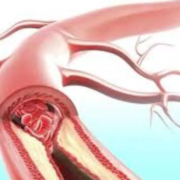Fire at Gynaecology ward of LLRM Medical College, no casualties reported

Meerut: A massive fire broke out in the operation theatre of the gynaecology ward of Lala Lajpat Rai Memorial (LLRM) Medical College in Meerut on Friday. No casualties were reported, police said.
The incident took place on Friday morning.
Upon receiving the information, six fire tenders and personnel rushed to the spot.
According to Chief Fire Officer Santosh Kumar, no casualties have been reported.
Also Read:Fire breaks out at Noida District Hospital, 25 patients shifted
“The incident took place this morning. 6 fire tenders and personnel rushed to the spot and the fire was completely doused. No casualties have been reported,” CFO Kumar said, news agency ANI reported.
As per a media report in the TOI, LLRM spokesperson Rahul Singh said,” There is no human casualty, but the hospital suffered a loss of around Rs 1 crore .”
Chief fire officer Santosh Kumar Rai told TOI, ”A short circuit in an AC installed in the operation theatre caused the fire. Prima facie, the hospital administration didn’t turn off the AC for a long time, which put a burden on the power cables around 6:30 am. On receiving information about the blaze, six fire tenders rushed to the hospital. It took one-and-a-half hours to bring the fire under control.”
Earlier, a fire broke out in a garbage dump on Mathura Road in Aligarh city of Uttar Pradesh on Wednesday night, district authorities said.
Three fire tenders were rushed to the spot to put out the blaze.
“A fire has broken out in a garbage dump. Three fire brigades reached the spot to bring the blaze under control,” City Magistrate Om Prakash said.
Powered by WPeMatico



















